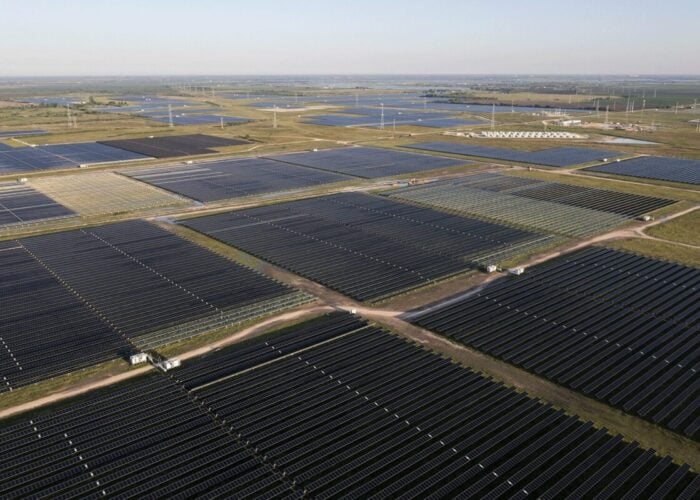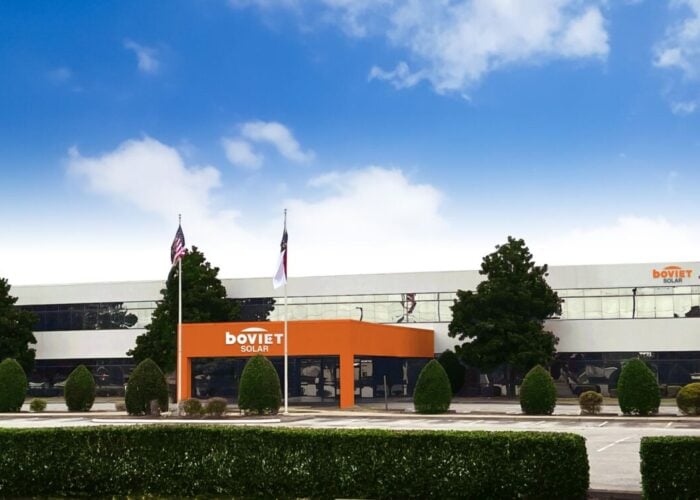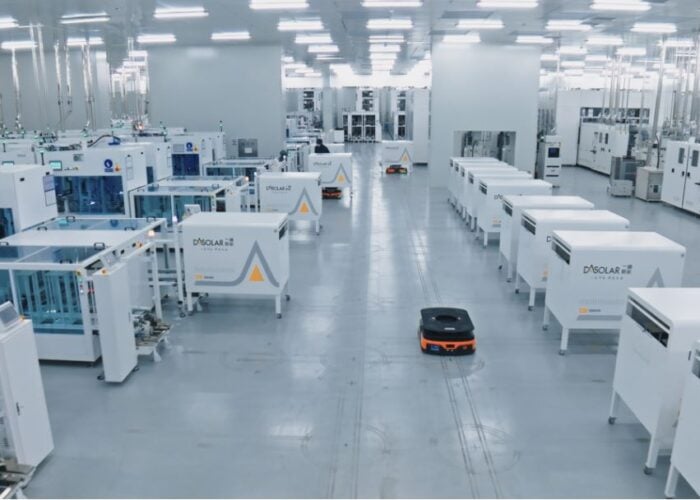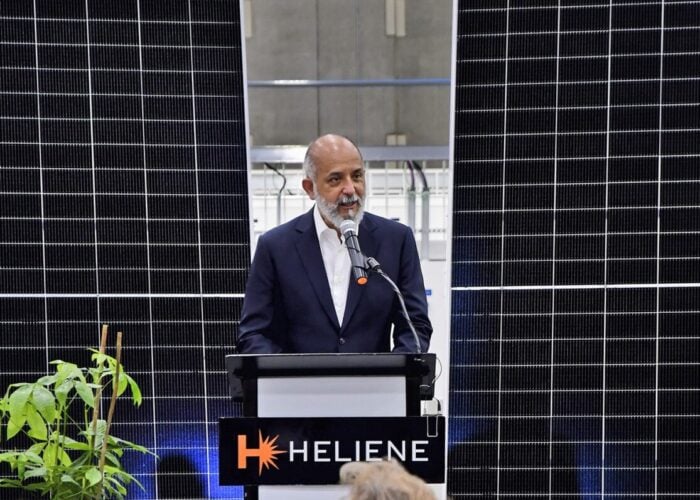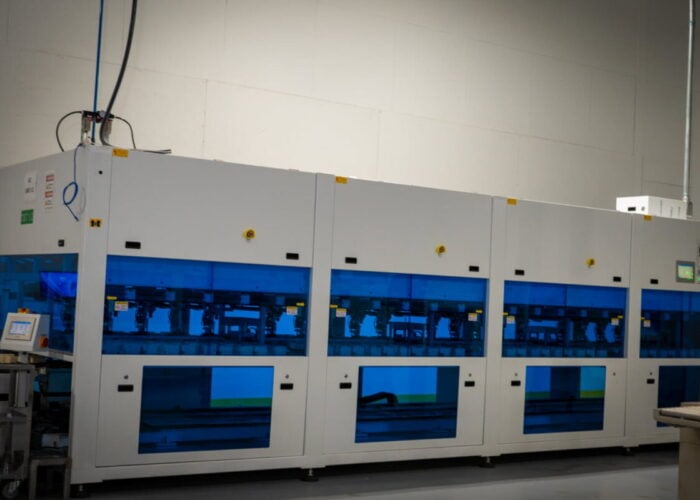
The PV ModuleTech 2017 meeting starts tomorrow (7 November 2017) in Kuala Lumpur, Malaysia, showcasing the key module issues that will guide site design and construction for large-scale solar sites in the next 12-18 months.
Scanning through the speaker presentations in the past 48 hours highlights the continued drive to push technology improvements rapidly through to GW-scale module supply.
Try Premium for just $1
- Full premium access for the first month at only $1
- Converts to an annual rate after 30 days unless cancelled
- Cancel anytime during the trial period
Premium Benefits
- Expert industry analysis and interviews
- Digital access to PV Tech Power journal
- Exclusive event discounts
Or get the full Premium subscription right away
Or continue reading this article for free
This article discusses how the industry has shifted so rapidly from a p-multi based market a couple of years ago, to one where mono PERC based bifacial modules could become a mainstream product offering exiting 2018. I also took the opportunity to catch up with the company that almost single-handedly created the mono revolution in the industry that can be seen across almost all leading c-Si suppliers today, LONGi Solar, ahead of the opening keynote presentation by Dr. Zhu Qiangzhong at PV ModuleTech 2017 tomorrow.
Mono shift was simply a matter of time
Anyone tracking the solar industry during the past 20 years has been acutely aware that mono-based solar modules are the route to higher efficiencies and panel power ratings, whether on n-type or p-type wafer substrates.
However, the only issue holding back mono becoming the leading technology by market share was the lack of a 10GW-plus low-cost ingot manufacturer that could compete at a wafer $/W level with the multi wafer powerhouse that GCL Poly had established in China.
GCL Poly, and numerous other Chinese companies that added casting furnaces during the period from 2008-2012, created a sheer volume of supply that led to p-type multi cell production completely dominating global module supply until the end of last year.
This all changed when LONGi Solar embarked on a highly ambitious, and ultimately successful, strategy that involved huge ingot pulling capacity being added in China, coupled with R&D investments that had not been seen before from an upstream Chinese company.
The timing of the capacity expansions also overlapped with cell manufacturers moving to rear-side efficiency enhancement schemes (almost exclusively focused on rear passivation layers, or what is simply referred to these days as PERC) that simply pushed the demand for mono wafers to the point that mono-based PERC module supply levels were effectively wafer-supply limited.
The industry is now moving into a period of mono-based PERC becoming more widely used in utility-based solar, a segment that has until now been largely dominated by 60 and 72-cell based p-type multi panels. Supply channels from China to India, and Vietnam to the US, have characterized the solar industry during 2016 and 2017.
PERC may simply be viewed as a bridge to bifacial mainstream adoption
Looking one step further than mono PERC (which is still largely a 2018-2019 mainstream entrance phenomenon), the speed at which glass/glass modules and bifaciality is moving with the major c-Si suppliers now suggests that almost all technology market forecasts will need to be adjusted very quickly.
For p-type cells (that dominate solar industry supply today), the ability to have both front and back surfaces absorbing sunlight (bifaciality) is simply a mouth-watering prospect for every asset owner, with many view this as free-money in a long-term hold investment strategy.
In short, while there are different routes with c-Si modules to get to bifacial performance, the easiest way to think about this is to imagine that the process upgrades used in PERC are an essential part of moving to bifacial operation in the first instance. Therefore, once PERC becomes the industry standard (certainly for p-mono, less clear for p-multi right now), then we are more than half way to bifacial glass/glass modules being rolled out in GW-volumes.
If this does happen, and the signs are very promising, it would be 2019-2020 that this would become a major issue for large-scale utility solar farms, and the technology shift would not happen over 5-10 years, but almost certainly within 12-18 months. The gains from bifaciality are potentially so game-changing that any single-sided module could quickly become obsolete in the market.
Rapid learning needed now from EPCs, developers and investors
Many developers and EPCs in the solar industry have known nothing but 60 and 72-cell p-type modules, either for fixed-tile site designs using 250-270W or 310-330W (p-dc STC) modules, made in China or Southeast Asia (Malaysia, Thailand, Vietnam).
Within two years, many of the LCOE and IRR models being used by the developers, all the way through to asset owners, will have been radically overhauled, if we move into 2020 with bifacial modules being the industry-norm.
While many voices right now are simply advocating bifacial as being just bonus-energy, this is an argument that is completely inadequate for investors that need to model energy yields to the month, day and hour over 25+ years.
Right now, the claims of rear side energy yield enhancements are unsubstantiated, as would be expected with limited data available. Therefore, the need to understand what on offer, and how to optimize plant design, is paramount. The good news is that the industry probably has most of next year to start working this out in a pragmatic way.
Since bifacial site performance may ultimately be a catalyst to certain markets that are too risky based on current site yield analyses from standard mono-facial based modules, those developers and investors that are ahead of the game with bifacial may have a significant advantage in auctions and tenders globally.
LONGi at PV ModuleTech
During the two-days of PV ModuleTech 2017, there are multiple talks and discussions on PERC and bifacial module performance and related bankability metrics.
It is therefore timely that the first talk of the event is from LONGi Solar, titled “The mono transition to high-performance PERC and bifacial modules as the industry standard.”
I took the time to catch up with LONGi Solar speaker Dr. Zhu Qiangzhong last week, ahead of his talk, and asked a few questions of what the audience can expect to hear.
How much has the move to PERC been a driver to then make the step to having bifacial modules produced in high volume?
Zhu Qiangzhong: There is … little cell production process difference between PERC and bifacial,… PERC production line[s] could be used to produce bifacial almost. We think that bifacial is ready to be mass produced…
What measures are being put in place through the manufacturing process to ensure that quality of module supply is maintained, given that both PERC and bifacial modules involve both the use of new materials and process flows in manufacturing?
Zhu Qiangzhong: [There are] new… suppliers, materials, [and] process[es],… satisfied to LONGi’s standard; the new product developing process should be controlled by [the] NPI process, and the new product should be designed to satisfy twice [the] IEC standard[s], like DH 2000 [and] TC 400. Also, the materials used in mass production should pass LONGi’s standards. ORT is also very important to control the producing process.
Are the downstream channels ready to use bifacial modules? What issues does the manufacturing industry as a whole need to work on to explain the yield benefits in moving from single-sided to bifacial operation?
Zhu Qiangzhong: We think that some customers are ready to develop bifacial systems; many research institutions have published… literature about the energy yield gain of bifacial [modules], some even [giving] the empirical formula to estimate the energy yield gain. The most important factors are ground reflectance, installation height and angle. However, we think that the system design is also very important (inverters, cables, [and] module design), because the current[s] in bifacial system[s] [are] about 1.2 times higher than single-sided system[s]. And we think that it is better to design no backside shading system for bifacial [modules].
With the mainstream adoption of bifacial modules, would this lead to the need to focus on selling kWh/$ produced rather than $/W pricing?
Zhu Qiangzhong: LONGi… only sell the front power of the module: some companies sell the backside power to customers by [adding] a factor about 13.5%, think[ing] that [a] system on… sand ground could [get] about 13.5% energy yield gain. However if the customers design the system based on [a] grass ground, they may lose [the] benefit.
When will PERC bifacial become the mainstream choice for the industry? And what will be the next stage in module performance enhancements?
Zhu Qiangzhong: We think that from [a] technology [standpoint], bifacial is ready to be the mainstream choice for [the] industry; the problem is the market [accepting] the new product. This year, we have already sold more than 20MW [of] bifacial modules to customers, and in the fixed system, customers [informed] us that they [could] get about 12% energy yield gain compared to polycrystalline modules. In… tracking system[s], customers [noted that with] bifacial modules…, they [could] get more than 46% energy yield gain, [compared to] fixed polycrystalline module system[s]. We think that bifacial [modules] with tracking system[s] [will] be the best [approach] to [overall] system performance.
The PV ModuleTech 2017 conference takes place in Kuala Lumper, Malaysia on 7-8 November 2017. Our PV-Tech team will be reporting from the event and summarizing key findings in the days and weeks following the two-day conference.

